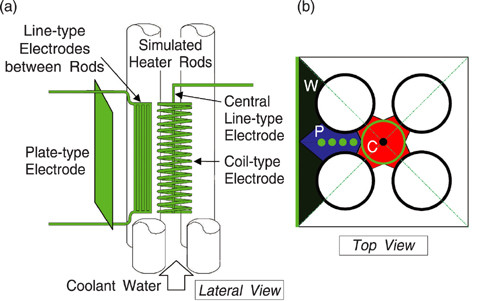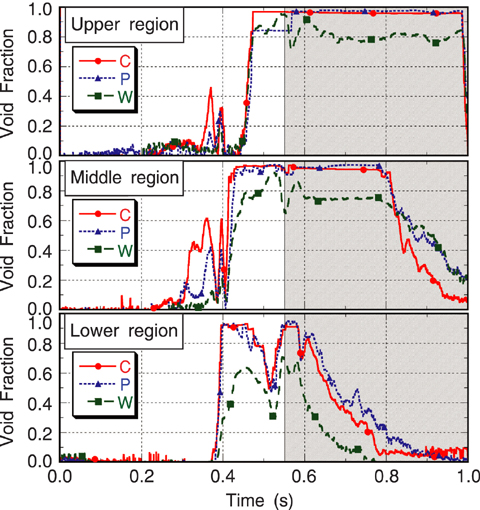
Fig.5-10 Layout and measurement area of impedance type void fraction meter

Fig.5-11 Time histories of void fraction in each measurement area
Recently, high burn-up fuels are being introduced in light water reactors (LWRs), making it possible to produce a larger amount of energy and utilize resources efficiently. However, it may cause the degradation of fuels due to the greater change of material composition with higher burn-up. To ensure the reactor integrity in an accident situation, LWRs are designed to satisfy regulatory criteria with a certain safety margin. Our research aims at contributing to more realistic evaluation of the safety margin of boiling water reactors (BWRs) during reactivity initiated accidents (RIAs), in which nuclear reaction is abruptly enhanced due to sudden extraction of control rods resulting in a rapid increase of core power.
In the BWR core, fast neutrons created by the nuclear reaction are decelerated by surrounding water to become thermal neutrons which sustain the chain reaction. Thus, the most favorable condition for nuclear reactions is where the fuels are fully surrounded by single-phase water. In the current safety assessment of RIAs, the power increase of the core is evaluated under such a condition. But in reality, the water around the fuels boils to generate vapor voids in the water. As the voids lower the amount of water around the fuels, the nuclear reaction becomes less active; the core power decreases by the feedback of negative void-reactivity. Therefore, the safety margin can be more realistically evaluated by taking the void-reactivity feedback into account. However, because of difficulties in the void behavior measurement under such rapid power increase conditions during RIAs, technical knowledge necessary for the evaluation of the void-reactivity feedback has been limited. We thus developed a fast-response measurement technique of the volume fraction of voids (void fraction), installing electrodes in a test flow channel having four simulated fuel rods as shown in Fig.5-10 and conducting a series of experiments simulating RIA conditions.
The void fraction meter utilizes the property of water that electrical impedance increases with the void fraction. The electrical impedance measured between several pairs of electrodes is converted into a local void fraction in the flow channel. Since the geometry of the test flow channel is complex, several types of electrodes including coil, line and plate types were installed in various spatial arrangements, and the combination of the electrodes was rapidly switched. The void fraction meters were placed in three regions along the flow direction (upper, middle and lower regions). In each region, the void fraction was measured in the central area (C), an inter-rod area (P) and a near-wall area (W). The changes in void fraction under conditions simulating the rapid heat generation of a RIA with a heating duration of 0.55 s are shown in Fig.5-11 as an example. It is clearly indicated that the variation of the void fraction strongly depends on the location in the channel. We conducted a number of experiments varying the heat generation rate and the temperature and velocity of water. The measured results form a valuable database to improve the prediction accuracy of the void fraction under RIA conditions. We made efforts further to improve the predictive capability of numerical analysis codes using the database, aiming at technical support of the national safety regulations.
This study was performed under a contract between Nuclear and Industrial Safety Agency (NISA) of the Ministry of Economy, Trade and Industry (METI) of Japan and JAEA.